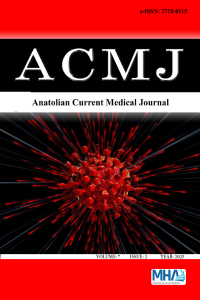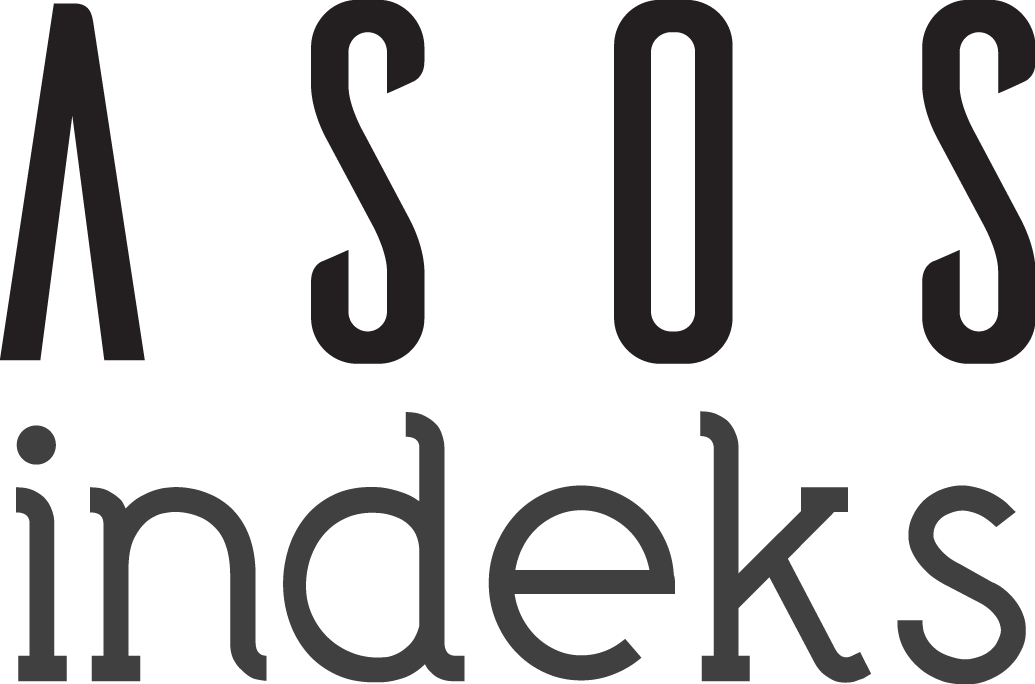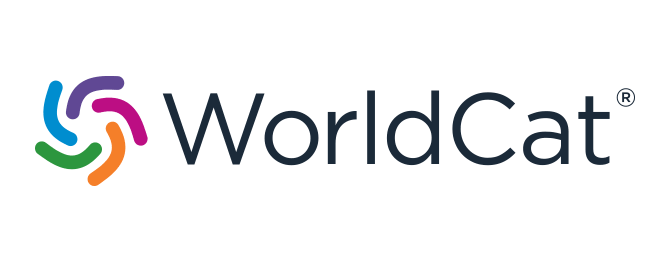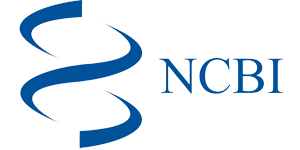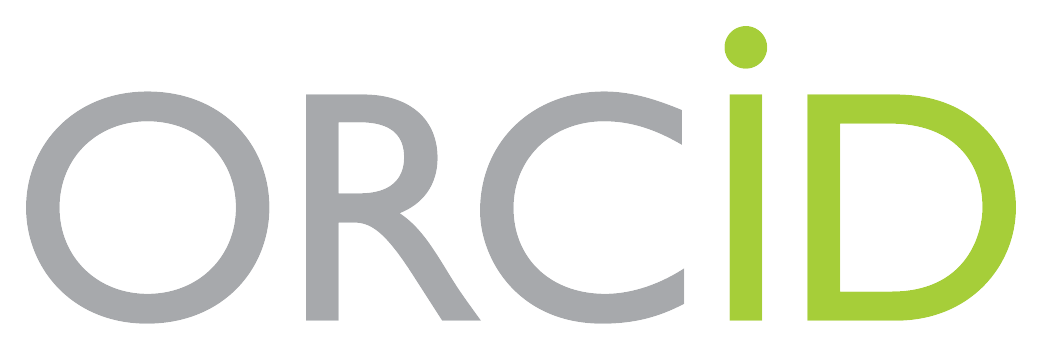Öz
This paper aims to identify the correlation between Aspergillus infections and the COVID-19 pandemic. The literature review used PubMed, EBSCO, Proquest Central at Kırıkkale University, Google, and Google Scholar. Between 2024 and 1980, the keywords “Aspergillus," “aspergillosis,” “invasive pulmonary aspergillosis,” “IPA,” “COVID-19-associated pulmonary aspergillosis,” “CAPA,” and “COVID-19” were searched. An association between COVID-19 pneumonia and invasive pulmonary aspergillosis (IPA), a complication seen in patients with severe respiratory syndromes, has been recently demonstrated, and the clinical features of COVID-19-associated pulmonary aspergillosis (CAPA) have been detailed. Due to diagnostic delays and the quick deterioration of respiratory diseases, infections caused by the Aspergillus genus are frequently recognized after the fact, which is a sad reality. From direct angioinvasion to hypersensitivity reactions, Aspergillus may inflict various human diseases. Invasive Aspergillus infections are sporadic in immunocompetent people and nearly always affect those immunosuppressed due to lung illness, immunosuppressive medication, or immunodeficiency. Aspergillus fumigatus (A. fumigatus) was found in most COVID-19 patients, and CAPA was also detected in several of these individuals. Also, patients with severe respiratory illnesses, like influenza and MERS-CoV, have been found to have multiple instances of IPA as super-infections. The function of antifungal prophylaxis in CAPA is unknown even though A. fumigatus was detected before the start of CAPA. On the other hand, voriconazole medication may be effective if begun right after.
Anahtar Kelimeler
Aspergillus invasive pulmonary aspergillosis COVID-19 associated pulmonary aspergillosis COVID-19 Aspergillus fumigatus
Kaynakça
- Trovato L, Calvo M, Migliorisi G, Astuto M, Oliveri F, Oliveri S. Fatal VAP-related pulmonary aspergillosis by Aspergillus niger in a positive COVID-19 patient. Respir Med Case Rep. 2021;32:101367. doi:10.1016/j.rmcr.2021.101367
- Salmanton-García J, Sprute R, Stemler J, et al. COVID-19-Associated pulmonary aspergillosis, March-August 2020. Emerg Infect Dis. 2021; 27(4):1077-1086. doi:10.3201/eid2704.204895
- Koehler P, Meis JF, Ostrosky-Zeichner L, et al. COVID-19/influenza-associated pulmonary aspergillosis—management. Uniklinik Köln: Köln, Germany, 2020. [cited 2020 May 30]. https://repository.publisso.de/resource/frl%3A6421494
- Beer KD, Jackson BR, Chiller T, Verweij PE, Van de Veerdonk FL, Wauters J. Does pulmonary aspergillosis complicate coronavirus disease 2019? Crit Care Explor. 2020;2(9):e0211. doi:10.1097/CCE. 0000000000000211
- Costantini C, van de Veerdonk FL, Romani L. Covid-19–associated pulmonary aspergillosis: the other side of the coin. Vaccines (Basel). 2020;8(4):713. doi:10.3390/vaccines8040713
- Arastehfar A, Carvalho A, van de Veerdonk FL, et al. COVID-19-associated pulmonary aspergillosis (CAPA)—from immunology to treatment. J Fungi (Basel). 2020;6(2):91. doi:10.3390/jof6020091
- van Arkel ALE, Rijpstra TA, Belderbos HNA, van Wijngaarden P, Verweij PE, Bentvelsen RG. COVID-19-associated pulmonary aspergillosis. Am J Respir Crit Care Med. 2020;202(1):132-135. doi:10.1164/rccm.202004-1038LE
- Zhang SY, Lian JS, Hu JH, et al. Clinical characteristics of different subtypes and risk factors for the severity of illness in patients with COVID-19 in Zhejiang, China. Infect Dis Poverty. 2020;9(1):85. doi:10. 1186/s40249-020-00710-6
- Nasir N, Farooqi J, Mahmood SF, Jabeen K. COVID-19-associated pulmonary aspergillosis (CAPA) in patients admitted with severe COVID-19 pneumonia: an observational study from Pakistan. Mycoses. 2020;63(8):766-770. doi:10.1111/myc.13135
- Lamoth F, Glampedakis E, Boillat-Blanco N, Oddo M, Pagani JL. Incidence of invasive pulmonary aspergillosis among critically ill COVID-19 patients. Clin Microbiol Infect. 2020;26(12):1706-1708. doi: 10.1016/j.cmi.2020.07.010
- lanio A, Dellière S, Fodil S, Bretagne S, Mégarbane B. Prevalence of putative invasive pulmonary aspergillosis in critically ill patients with COVID-19. Lancet Respir Med. 2020;8(6):e48-e49. doi:10.1016/S2213-2600(20)30237-X
- Harman EM. Aspergillosis. In: Soo Hoo GW (Ed). Medscape. Updated: May 12, 2021. https://emedicine.medscape.com/article/296052-overview#a5 (Accessed online on June 25, 2024)
- Aspergilloma and AIDS. A comparison of HIV-infected and HIV-negative individuals. Chest. 1997;111(3):612-618. doi:10.1378/chest.111.3. 612
- Meersseman W, Vandecasteele SJ, Wilmer A, Verbeken E, Peetermans WE, Van Wijngaerden E. Invasive aspergillosis in critically ill patients without malignancy. Am J Respir Crit Care Med. 2004;170(6):621-625. doi:10.1164/rccm.200401-093OC
- Rutsaert L, Steinfort N, Van Hunsel T, et al. COVID-19-associated invasive pulmonary aspergillosis. Ann Intensive Care. 2020;10(1):71. doi:10.1186/s13613-020-00686-4
- Bartoletti M, Pascale R, Cricca M, et al. Epidemiology of invasive pulmonary aspergillosis among COVID-19 intubated patients: a prospective study. Clin Infect Dis. 2021;73(11):e3606-e3614. doi:10.1093/cid/ciaa1065
- Helleberg M, Steensen M, Arendrup MC. Invasive aspergillosis in patients with severe COVID-19 pneumonia. Clin Microbiol Infect. 2021; 27(1):147-148. doi:10.1016/j.cmi.2020.07.047
- Mohamed A, Rogers TR, Talento AF. COVID-19 associated invasive pulmonary aspergillosis: diagnostic and therapeutic challenges. J Fungi (Basel). 2020;6(3):115. doi:10.3390/jof6030115
- Lamoth F, Glampedakis E, Boillat-Blanco N, Oddo M, Pagani JL. Incidence of invasive pulmonary aspergillosis among critically ill COVID-19 patients. Clin Microbiol Infect. 2020;26(12):1706-1708. doi: 10.1016/j.cmi.2020.07.010
- Moeller B. Assessing invasive pulmonary aspergillosis incidence in COVID-19 vs Influenza. Pulmonary Advisor. Available at https://www.pulmonologyadvisor.com/home/topics/lung-infection/assessing-invasive-pulmonary-aspergillosis-incidence-in-covid-19-vs-influenza/. April 22, 2021.
- Lamoth F, Lewis RE, Walsh TJ, Kontoyiannis DP. Navigating the uncertainties of COVID-19 associated aspergillosis (CAPA): a comparison with influenza associated aspergillosis (IAPA). J Infect Dis. 2021;224(10):1631-1640. doi:10.1093/infdis/jiab163
- Cennimo DJ. Coronavirus disease 2019 (COVID-19) clinical presentation. In: Bronze MS (Ed). Medscape. Updated: May 01, 2024.https://emedicine.medscape.com/article/2500114-clinical#b3 (Accessed online on June 25, 20214)
- Wiersinga WJ, Rhodes A, Cheng AC, Peacock SJ, Prescott HC. Pathophysiology, transmission, diagnosis, and treatment of coronavirus disease 2019 (COVID-19): a review. JAMA. 2020;324(8):782-793. doi:10. 1001/jama.2020.12839
- CDC. Long-term effects of COVID-19. Centers for disease control and prevention. Available at https://www.cdc.gov/coronavirus/2019-ncov/long-term-effects.html. 2020 Nov 13; Accessed: December 1, 2021.
- [Guideline] COVID-19 Treatment Guidelines Panel. Clinical Spectrum of SARS-CoV-2 Infection. National Institutes of Health. Available at https://www.covid19treatmentguidelines.nih.gov/overview/clinical-spectrum/. March 1 2024 (updated); Accessed: February 29, 2024.
- Datta SD, Talwar A, Lee JT. A proposed framework and timeline of the spectrum of disease due to sars-cov-2 infection: illness beyond acute infection and public health implications. JAMA. 2020;324(22):2251-2252. doi:10.1001/jama.2020.22717
- McFadyen JD, Stevens H, Peter K. The emerging threat of (Micro)thrombosis in COVID-19 and its therapeutic implications. Circ Res. 2020;127(4):571-587. doi:10.1161/CIRCRESAHA.120.317447
- Walsh TJ, Anaissie EJ, Denning DW, et al. Treatment of aspergillosis: clinical practice guidelines of the Infectious Diseases Society of America. Clin Infect Dis. 2008;46(3):327-360. doi:10.1086/525258
- Arastehfar A, Carvalho A, van de Veerdonk FL, et al. COVID-19 associated pulmonary aspergillosis (CAPA)-from immunology to treatment. J Fungi (Basel). 2020;6(2):91. doi:10.3390/jof6020091
- Koehler P, Cornely OA, Böttiger BW, et al. COVID-19 associated pulmonary aspergillosis. Mycoses. 2020;63(6):528-534. doi:10.1111/myc. 13096
- Charles MP, Kali A, Easow JM, et al. Ventilator-associated pneumonia. Australas Med J. 2014;7(8):334-344. doi:10.4066/AMJ.2014. 2105
- Torres A, Martin-Loeches I. Invasive pulmonary aspergillosis in ventilator-associated pneumonia: the hidden enemy? Am J Respir Crit Care Med. 2020;202(8):1071-1073. doi:10.1164/rccm.202006-2605ED
- Person AK, Chudgar SM, Norton BL, Tong BC, Stout JE. Aspergillus niger: an unusual cause of invasive pulmonary aspergillosis. J Med Microbiol. 2010;59(Pt 7):834-838. doi:10.1099/jmm.0.018309-0
- Trovato L, Scalia G, Domina M, Oliveri S. Environmental isolates of multi-azole-resistant Aspergillus spp. in Southern Italy. J Fungi (Basel). 2018;4(4):131. doi:10.3390/jof4040131
- Dupont D, Menotti J, Turc J, et al. Pulmonary aspergillosis in critically ill patients with coronavirus disease 2019 (COVID-19). Med Mycol. 2021;59(1):110-114. doi:10.1093/mmy/myaa078
- Schein F, Munoz-Pons H, Mahinc C, Grange R, Cathébras P, Flori P. Fatal aspergillosis complicating severe SARS-CoV-2 infection: a case report. J Mycol Med. 2020;30(4):101039. doi:10.1016/j.mycmed.2020.101039
- Kitayama T, Tone K, Makimura K, Takagi M, Kuwano K. COVID-19-associated pulmonary aspergillosis complicated by severe coronavirus disease: is detection of Aspergillus in airway specimens before disease onset an indicator of antifungal prophylaxis? Cureus. 2023;15(3): e36212. doi:10.7759/cureus.36212
- Koehler P, Bassetti M, Chakrabarti A, et al. Defining and managing COVID-19-associated pulmonary aspergillosis: the 2020 ECMM/ISHAM consensus criteria for research and clinical guidance. Lancet Infect Dis. 2021;21(6):e149-e162. doi:10.1016/S1473-3099(20)30847-1
- Chong WH, Neu KP. Incidence, diagnosis and outcomes of COVID-19-associated pulmonary aspergillosis (CAPA): a systematic review. J Hosp Infect. 2021;113:115-129. doi:10.1016/j.jhin.2021.04.012
- Cornely OA, Maertens J, Bresnik M, et al. Liposomal amphotericin B as initial therapy for invasive mold infection: a randomized trial comparing a high-loading dose regimen with standard dosing (AmBiLoad trial). Clin Infect Dis. 2007;44(10):1289-1297. doi:10.1086/514341
- Hatzl S, Reisinger AC, Posch F, et al. Antifungal prophylaxis for prevention of COVID-19-associated pulmonary aspergillosis in critically ill patients: an observational study. Crit Care. 2021;25(1):335. doi:10.1186/s13054-021-03753-9
Öz
Kaynakça
- Trovato L, Calvo M, Migliorisi G, Astuto M, Oliveri F, Oliveri S. Fatal VAP-related pulmonary aspergillosis by Aspergillus niger in a positive COVID-19 patient. Respir Med Case Rep. 2021;32:101367. doi:10.1016/j.rmcr.2021.101367
- Salmanton-García J, Sprute R, Stemler J, et al. COVID-19-Associated pulmonary aspergillosis, March-August 2020. Emerg Infect Dis. 2021; 27(4):1077-1086. doi:10.3201/eid2704.204895
- Koehler P, Meis JF, Ostrosky-Zeichner L, et al. COVID-19/influenza-associated pulmonary aspergillosis—management. Uniklinik Köln: Köln, Germany, 2020. [cited 2020 May 30]. https://repository.publisso.de/resource/frl%3A6421494
- Beer KD, Jackson BR, Chiller T, Verweij PE, Van de Veerdonk FL, Wauters J. Does pulmonary aspergillosis complicate coronavirus disease 2019? Crit Care Explor. 2020;2(9):e0211. doi:10.1097/CCE. 0000000000000211
- Costantini C, van de Veerdonk FL, Romani L. Covid-19–associated pulmonary aspergillosis: the other side of the coin. Vaccines (Basel). 2020;8(4):713. doi:10.3390/vaccines8040713
- Arastehfar A, Carvalho A, van de Veerdonk FL, et al. COVID-19-associated pulmonary aspergillosis (CAPA)—from immunology to treatment. J Fungi (Basel). 2020;6(2):91. doi:10.3390/jof6020091
- van Arkel ALE, Rijpstra TA, Belderbos HNA, van Wijngaarden P, Verweij PE, Bentvelsen RG. COVID-19-associated pulmonary aspergillosis. Am J Respir Crit Care Med. 2020;202(1):132-135. doi:10.1164/rccm.202004-1038LE
- Zhang SY, Lian JS, Hu JH, et al. Clinical characteristics of different subtypes and risk factors for the severity of illness in patients with COVID-19 in Zhejiang, China. Infect Dis Poverty. 2020;9(1):85. doi:10. 1186/s40249-020-00710-6
- Nasir N, Farooqi J, Mahmood SF, Jabeen K. COVID-19-associated pulmonary aspergillosis (CAPA) in patients admitted with severe COVID-19 pneumonia: an observational study from Pakistan. Mycoses. 2020;63(8):766-770. doi:10.1111/myc.13135
- Lamoth F, Glampedakis E, Boillat-Blanco N, Oddo M, Pagani JL. Incidence of invasive pulmonary aspergillosis among critically ill COVID-19 patients. Clin Microbiol Infect. 2020;26(12):1706-1708. doi: 10.1016/j.cmi.2020.07.010
- lanio A, Dellière S, Fodil S, Bretagne S, Mégarbane B. Prevalence of putative invasive pulmonary aspergillosis in critically ill patients with COVID-19. Lancet Respir Med. 2020;8(6):e48-e49. doi:10.1016/S2213-2600(20)30237-X
- Harman EM. Aspergillosis. In: Soo Hoo GW (Ed). Medscape. Updated: May 12, 2021. https://emedicine.medscape.com/article/296052-overview#a5 (Accessed online on June 25, 2024)
- Aspergilloma and AIDS. A comparison of HIV-infected and HIV-negative individuals. Chest. 1997;111(3):612-618. doi:10.1378/chest.111.3. 612
- Meersseman W, Vandecasteele SJ, Wilmer A, Verbeken E, Peetermans WE, Van Wijngaerden E. Invasive aspergillosis in critically ill patients without malignancy. Am J Respir Crit Care Med. 2004;170(6):621-625. doi:10.1164/rccm.200401-093OC
- Rutsaert L, Steinfort N, Van Hunsel T, et al. COVID-19-associated invasive pulmonary aspergillosis. Ann Intensive Care. 2020;10(1):71. doi:10.1186/s13613-020-00686-4
- Bartoletti M, Pascale R, Cricca M, et al. Epidemiology of invasive pulmonary aspergillosis among COVID-19 intubated patients: a prospective study. Clin Infect Dis. 2021;73(11):e3606-e3614. doi:10.1093/cid/ciaa1065
- Helleberg M, Steensen M, Arendrup MC. Invasive aspergillosis in patients with severe COVID-19 pneumonia. Clin Microbiol Infect. 2021; 27(1):147-148. doi:10.1016/j.cmi.2020.07.047
- Mohamed A, Rogers TR, Talento AF. COVID-19 associated invasive pulmonary aspergillosis: diagnostic and therapeutic challenges. J Fungi (Basel). 2020;6(3):115. doi:10.3390/jof6030115
- Lamoth F, Glampedakis E, Boillat-Blanco N, Oddo M, Pagani JL. Incidence of invasive pulmonary aspergillosis among critically ill COVID-19 patients. Clin Microbiol Infect. 2020;26(12):1706-1708. doi: 10.1016/j.cmi.2020.07.010
- Moeller B. Assessing invasive pulmonary aspergillosis incidence in COVID-19 vs Influenza. Pulmonary Advisor. Available at https://www.pulmonologyadvisor.com/home/topics/lung-infection/assessing-invasive-pulmonary-aspergillosis-incidence-in-covid-19-vs-influenza/. April 22, 2021.
- Lamoth F, Lewis RE, Walsh TJ, Kontoyiannis DP. Navigating the uncertainties of COVID-19 associated aspergillosis (CAPA): a comparison with influenza associated aspergillosis (IAPA). J Infect Dis. 2021;224(10):1631-1640. doi:10.1093/infdis/jiab163
- Cennimo DJ. Coronavirus disease 2019 (COVID-19) clinical presentation. In: Bronze MS (Ed). Medscape. Updated: May 01, 2024.https://emedicine.medscape.com/article/2500114-clinical#b3 (Accessed online on June 25, 20214)
- Wiersinga WJ, Rhodes A, Cheng AC, Peacock SJ, Prescott HC. Pathophysiology, transmission, diagnosis, and treatment of coronavirus disease 2019 (COVID-19): a review. JAMA. 2020;324(8):782-793. doi:10. 1001/jama.2020.12839
- CDC. Long-term effects of COVID-19. Centers for disease control and prevention. Available at https://www.cdc.gov/coronavirus/2019-ncov/long-term-effects.html. 2020 Nov 13; Accessed: December 1, 2021.
- [Guideline] COVID-19 Treatment Guidelines Panel. Clinical Spectrum of SARS-CoV-2 Infection. National Institutes of Health. Available at https://www.covid19treatmentguidelines.nih.gov/overview/clinical-spectrum/. March 1 2024 (updated); Accessed: February 29, 2024.
- Datta SD, Talwar A, Lee JT. A proposed framework and timeline of the spectrum of disease due to sars-cov-2 infection: illness beyond acute infection and public health implications. JAMA. 2020;324(22):2251-2252. doi:10.1001/jama.2020.22717
- McFadyen JD, Stevens H, Peter K. The emerging threat of (Micro)thrombosis in COVID-19 and its therapeutic implications. Circ Res. 2020;127(4):571-587. doi:10.1161/CIRCRESAHA.120.317447
- Walsh TJ, Anaissie EJ, Denning DW, et al. Treatment of aspergillosis: clinical practice guidelines of the Infectious Diseases Society of America. Clin Infect Dis. 2008;46(3):327-360. doi:10.1086/525258
- Arastehfar A, Carvalho A, van de Veerdonk FL, et al. COVID-19 associated pulmonary aspergillosis (CAPA)-from immunology to treatment. J Fungi (Basel). 2020;6(2):91. doi:10.3390/jof6020091
- Koehler P, Cornely OA, Böttiger BW, et al. COVID-19 associated pulmonary aspergillosis. Mycoses. 2020;63(6):528-534. doi:10.1111/myc. 13096
- Charles MP, Kali A, Easow JM, et al. Ventilator-associated pneumonia. Australas Med J. 2014;7(8):334-344. doi:10.4066/AMJ.2014. 2105
- Torres A, Martin-Loeches I. Invasive pulmonary aspergillosis in ventilator-associated pneumonia: the hidden enemy? Am J Respir Crit Care Med. 2020;202(8):1071-1073. doi:10.1164/rccm.202006-2605ED
- Person AK, Chudgar SM, Norton BL, Tong BC, Stout JE. Aspergillus niger: an unusual cause of invasive pulmonary aspergillosis. J Med Microbiol. 2010;59(Pt 7):834-838. doi:10.1099/jmm.0.018309-0
- Trovato L, Scalia G, Domina M, Oliveri S. Environmental isolates of multi-azole-resistant Aspergillus spp. in Southern Italy. J Fungi (Basel). 2018;4(4):131. doi:10.3390/jof4040131
- Dupont D, Menotti J, Turc J, et al. Pulmonary aspergillosis in critically ill patients with coronavirus disease 2019 (COVID-19). Med Mycol. 2021;59(1):110-114. doi:10.1093/mmy/myaa078
- Schein F, Munoz-Pons H, Mahinc C, Grange R, Cathébras P, Flori P. Fatal aspergillosis complicating severe SARS-CoV-2 infection: a case report. J Mycol Med. 2020;30(4):101039. doi:10.1016/j.mycmed.2020.101039
- Kitayama T, Tone K, Makimura K, Takagi M, Kuwano K. COVID-19-associated pulmonary aspergillosis complicated by severe coronavirus disease: is detection of Aspergillus in airway specimens before disease onset an indicator of antifungal prophylaxis? Cureus. 2023;15(3): e36212. doi:10.7759/cureus.36212
- Koehler P, Bassetti M, Chakrabarti A, et al. Defining and managing COVID-19-associated pulmonary aspergillosis: the 2020 ECMM/ISHAM consensus criteria for research and clinical guidance. Lancet Infect Dis. 2021;21(6):e149-e162. doi:10.1016/S1473-3099(20)30847-1
- Chong WH, Neu KP. Incidence, diagnosis and outcomes of COVID-19-associated pulmonary aspergillosis (CAPA): a systematic review. J Hosp Infect. 2021;113:115-129. doi:10.1016/j.jhin.2021.04.012
- Cornely OA, Maertens J, Bresnik M, et al. Liposomal amphotericin B as initial therapy for invasive mold infection: a randomized trial comparing a high-loading dose regimen with standard dosing (AmBiLoad trial). Clin Infect Dis. 2007;44(10):1289-1297. doi:10.1086/514341
- Hatzl S, Reisinger AC, Posch F, et al. Antifungal prophylaxis for prevention of COVID-19-associated pulmonary aspergillosis in critically ill patients: an observational study. Crit Care. 2021;25(1):335. doi:10.1186/s13054-021-03753-9
Ayrıntılar
| Birincil Dil | İngilizce |
|---|---|
| Konular | Kulak Burun Boğaz |
| Bölüm | Review |
| Yazarlar | |
| Yayımlanma Tarihi | 21 Mart 2025 |
| Gönderilme Tarihi | 14 Ocak 2025 |
| Kabul Tarihi | 18 Şubat 2025 |
| Yayımlandığı Sayı | Yıl 2025 Cilt: 7 Sayı: 2 |
TR DİZİN ULAKBİM and International Indexes (1b)
Interuniversity Board (UAK) Equivalency: Article published in Ulakbim TR Index journal [10 POINTS], and Article published in other (excuding 1a, b, c) international indexed journal (1d) [5 POINTS]
Note: Our journal is not WOS indexed and therefore is not classified as Q.
You can download Council of Higher Education (CoHG) [Yüksek Öğretim Kurumu (YÖK)] Criteria) decisions about predatory/questionable journals and the author's clarification text and journal charge policy from your browser. https://dergipark.org.tr/tr/journal/3449/file/4924/show
Journal Indexes and Platforms:
TR Dizin ULAKBİM, Google Scholar, Crossref, Worldcat (OCLC), DRJI, EuroPub, OpenAIRE, Turkiye Citation Index, Turk Medline, ROAD, ICI World of Journal's, Index Copernicus, ASOS Index, General Impact Factor, Scilit.The indexes of the journal's are;
The platforms of the journal's are;
|
The indexes/platforms of the journal are;
TR Dizin Ulakbim, Crossref (DOI), Google Scholar, EuroPub, Directory of Research Journal İndexing (DRJI), Worldcat (OCLC), OpenAIRE, ASOS Index, ROAD, Turkiye Citation Index, ICI World of Journal's, Index Copernicus, Turk Medline, General Impact Factor, Scilit
Journal articles are evaluated as "Double-Blind Peer Review"
All articles published in this journal are licensed under a Creative Commons Attribution 4.0 International License (CC BY 4.0)


